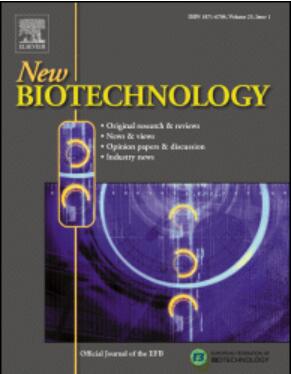如何将食物垃圾转化为新产品:欧洲立法和酶水解分析。
IF 4.9
2区 生物学
Q1 BIOCHEMICAL RESEARCH METHODS
引用次数: 0
摘要
产生的食物浪费具有重大的经济和环境影响。由于这大部分被认为是营养丰富的基质,它可以减少或转化,以避免负面影响。近年来,新技术越来越关注这一目标,通过提取和回收有价值的成分来配制新产品。在此,本文分析了食物垃圾管理策略和新兴的科学进展。其中,酶水解代表了传统化学提取的一个有前途的可持续替代方案。与化学方法不同,它在温和的条件下工作,减少了能源消耗和有害的副产品,同时有效地从食物垃圾中回收纤维、蛋白质、酚类化合物和其他感兴趣的生物分子。此外,当与其他技术相结合时,其有效性可以显著提高。然而,目前这些应用大多处于实验室规模,需要对潜在效益和工业水平的可行性进行全面评估。在这种情况下,将酶水解纳入循环经济模型可以通过促进工业应用中的废物增值来进一步提高资源效率。这种方法与可持续发展目标相一致,促进了生物基产品的创造,减少了对不可再生资源的依赖。尽管面临着诸如监管约束和对可扩展的、具有成本效益的过程的需求等挑战,创新和可持续实践的发展可以带来显著的经济、社会和环境效益。本文章由计算机程序翻译,如有差异,请以英文原文为准。
How food wastes can be converted into new products: European legislation and analysis of enzymatic hydrolysis
The generated food waste has a significant economic and environmental impact. Since most of this is considered nutrient-rich substrate, it can be reduced or converted to avoid negative effects. In recent years, new technologies have increasingly focused on this aim by extracting and recovering valuable components for the formulation of new products. Herein, this review analyses food waste management strategies and emerging scientific advancements. Among these, enzymatic hydrolysis represents a promising sustainable alternative to traditional chemical extraction. Unlike chemical methods, it operates under mild conditions, reducing energy consumption and harmful by-products, while efficiently recovering fibres, proteins, phenolic compounds, and other biomolecules of interest from food waste. Furthermore, its effectiveness can be significantly enhanced when combined with other techniques. However, most of these applications are currently at the laboratory scale, and a thorough assessment of the potential benefits and the feasibility at an industrial level is required. In this context, integrating enzymatic hydrolysis within circular economy models can further improve resource efficiency by promoting waste valorisation in industrial applications. This approach aligns with sustainable development goals, fostering the creation of bio-based products and reducing dependence on non-renewable resources. Despite facing challenges such as regulatory constraints and the need for scalable, cost-effective processes, the development of innovative and sustainable practices can bring significant economic, social, and environmental benefits.
求助全文
通过发布文献求助,成功后即可免费获取论文全文。
去求助
来源期刊

New biotechnology
生物-生化研究方法
CiteScore
11.40
自引率
1.90%
发文量
77
审稿时长
1 months
期刊介绍:
New Biotechnology is the official journal of the European Federation of Biotechnology (EFB) and is published bimonthly. It covers both the science of biotechnology and its surrounding political, business and financial milieu. The journal publishes peer-reviewed basic research papers, authoritative reviews, feature articles and opinions in all areas of biotechnology. It reflects the full diversity of current biotechnology science, particularly those advances in research and practice that open opportunities for exploitation of knowledge, commercially or otherwise, together with news, discussion and comment on broader issues of general interest and concern. The outlook is fully international.
The scope of the journal includes the research, industrial and commercial aspects of biotechnology, in areas such as: Healthcare and Pharmaceuticals; Food and Agriculture; Biofuels; Genetic Engineering and Molecular Biology; Genomics and Synthetic Biology; Nanotechnology; Environment and Biodiversity; Biocatalysis; Bioremediation; Process engineering.
 求助内容:
求助内容: 应助结果提醒方式:
应助结果提醒方式:


